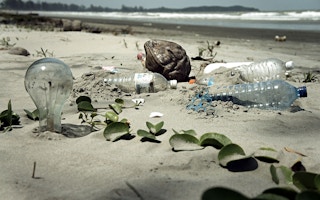Vast swaths of the world’s oceans are turning into “dead zones” as global warming and pollution strips them of oxygen, threatening marine life on a massive scale, a new study shows.
The analysis, which reviews the major research on ocean oxygen loss, is the first to investigate the causes, consequences and solutions to low oxygen concentrations in the open oceans and coastal waters.
Over the past 50 years, zones in the open ocean with zero oxygen have more than quadrupled, or increased by over 4.5 million square kilometers (1.7 million square miles) — an area roughly the size of the European Union — according to the study published Jan. 2 in the journal Science.
It added that in coastal water bodies, including estuaries and seas, the number of low-oxygen sites have soared about tenfold from fewer than 50 in 1950. In ocean waters, oxygen levels are also falling, with 77 billion tons being lost since 1950.
The analysis indicated that deoxygenation in the open ocean was caused by global warming as a result of increased greenhouse gas emissions, as warmer water holds less oxygen. In coastal zones, meanwhile, the culprit was pollution from agricultural runoff and sewage.
“Oxygen is fundamental to life in the oceans,” said Denise Breitburg, lead author and marine ecologist with the Smithsonian Environmental Research Center. “The decline in ocean oxygen ranks among the most serious effects of human activities on the Earth’s environment.”
The scientists expect oxygen to continue dropping even outside these zones as Earth warms.
“
The decline in ocean oxygen ranks among the most serious effects of human activities on the Earth’s environment.
Denise Breitburg, marine ecologist, Smithsonian Environmental Research Center
Even a small decline in oxygen levels can stunt growth in marine animals, hinder reproduction and lead to disease or even death. It also can trigger the release of dangerous chemicals such as nitrous oxide, a greenhouse gas up to 300 times more potent than carbon dioxide, and toxic hydrogen sulfide. While some animals can thrive in these dead zones, biodiversity suffers as a whole.
Oxygen depletion in the world’s waters would affect not only marine ecosystems, but also humans. The oceans feed more than 500 million people, particularly in poorer nations, and provide a source of livelihood for 350 million.
“Approximately half of the oxygen on Earth comes from the ocean,” said Vladimir Ryabinin, executive secretary of the UN’s Intergovernmental Oceanographic Commission, which in 2016 established the Global Ocean Oxygen Network (GO2NE) that produced the recent study.
“However, combined effects of nutrient loading and climate change are greatly increasing the number and size of ‘dead zones’ in the open ocean and coastal waters, where oxygen is too low to support most marine life,” he added.
Robert Diaz, from the Virginia Institute of Marine Science, who reviewed the study, is worried that the governments around the world are not doing enough to tackle this pressing problem.
“Unfortunately, it will take severe and persistent mortality of fisheries for the seriousness of low oxygen to be realized,” he said as quoted by the Guardian. “No other variable of such ecological importance to coastal ecosystems has changed so drastically in such a short period of time from human activities as dissolved oxygen.”
Lucia von Reusner, the campaign director for the NGO Mighty Earth, which recently exposed the companies most responsible for the largest dead zone on record in the Gulf of Mexico last year, said the findings were no surprise, and confirmed the unchecked pollution from industrial agriculture.
“These dead zones will continue to expand unless the major meat companies that dominate our global agriculture system start taking responsibility for cleaning up their supply chains to keep pollution out of our waters,” she said in a statement.
Despite the grim prognosis for the world’s oceans, the study suggested that cutting fossil fuel use and protecting vulnerable marine life could tackle the problem.
“This is a problem we can solve,” Breitburg said. “Halting climate change requires a global effort, but even local actions can help with nutrient-driven oxygen decline.”
She cited the ongoing recovery of Chesapeake Bay, the Atlantic estuary enclosed by the U.S. states of Maryland, Delaware, Virginia and the District of Columbia, where nitrogen pollution has dropped 24 percent thanks to better sewage treatment, cleaner farming practices and more stringent regulation like the Clean Air Act. While some low-oxygen zones persist, there are now almost no areas of the Chesapeake with zero oxygen.
“Tackling climate change may seem more daunting,” Breitburg said, “but doing it is critical for stemming the decline of oxygen in our oceans, and for nearly every aspect of life on our planet.”
This story was published with permission from Mongabay.com. Read the full story.










